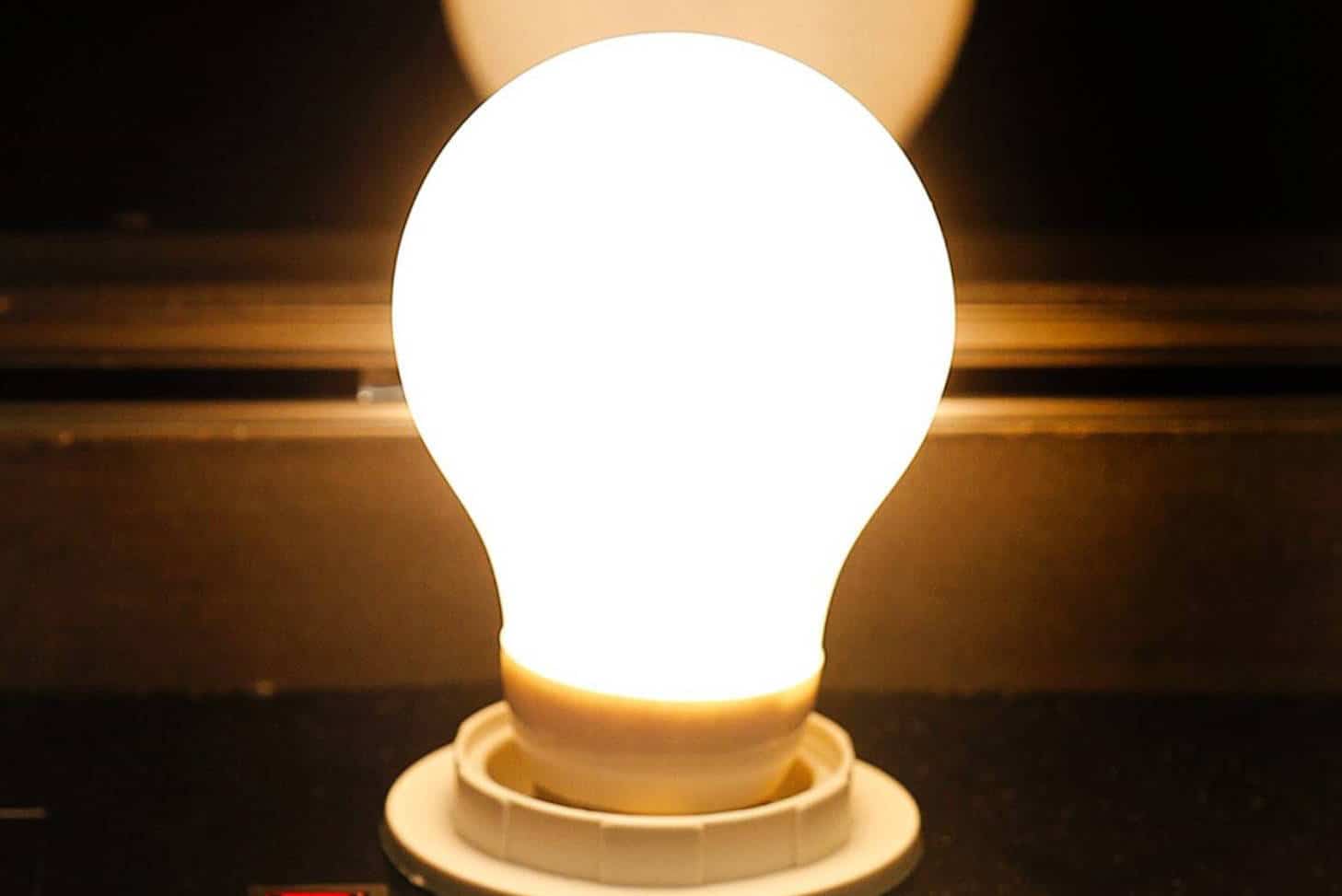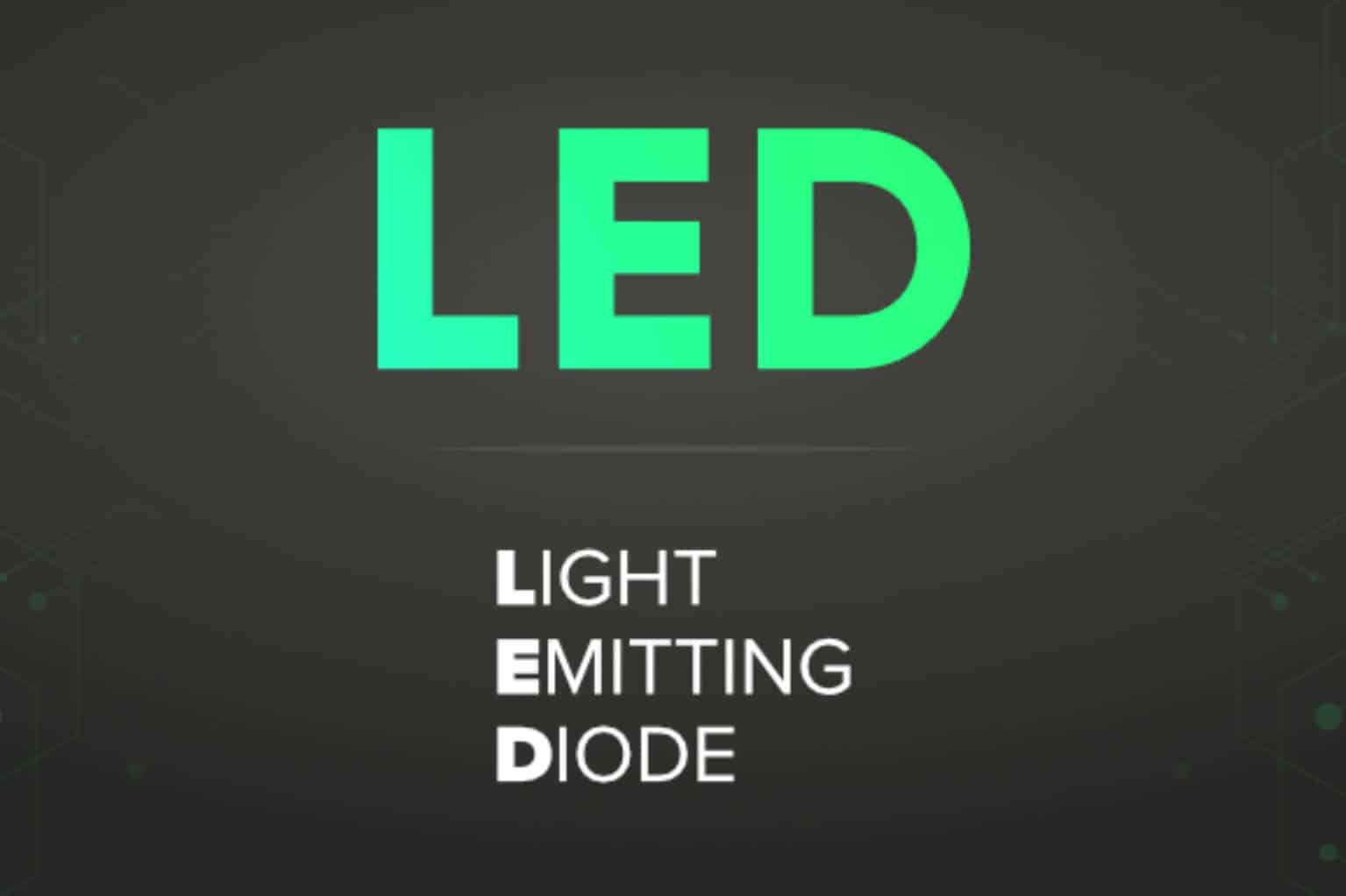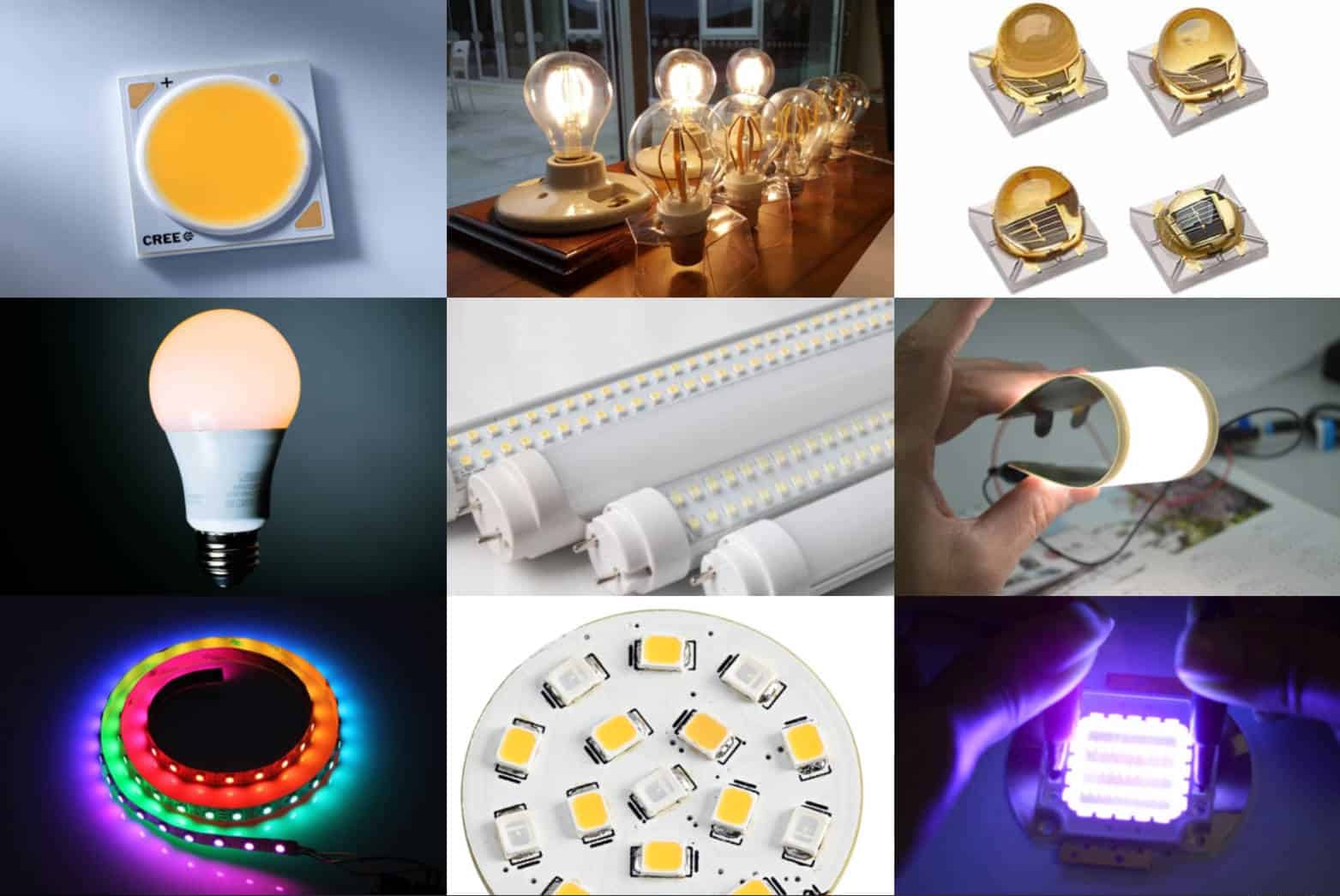You may have heard about LEDs which are often connected to home appliances and lights. And for that reason, this question may have crossed your mind “What does LED stand for?”.
You may want to know everything about LEDs, from their meaning, history, how they work, pros and cons, and uses. We will talk about LEDs, so stay put and read through this article.
What does LED Stand for?
First off, let us define what LED stands for. LED is the acronym for Light-Emitting Diode, which is a semiconductor device. It is a device that produces light where electric power passes through.
Light Emitting Diodes are considered a solid-state device since the semiconductor device produces light. It also creates OLEDS or also known as the Organic Light-Emitting Diodes.
The LED lighting technology makes it different compared to the other light bulbs. Other light bulbs such as the tungsten halogen lamp and the incandescent light bulb use heated filaments to produce light.
On the other hand, fluorescent lamps need to discharge gas in order to create light.
Let us quickly dissect the acronyms LED and understand word per word so that it will be easier to understand the following pieces of information:
Terms | Meaning |
Light | ● Light can either be an artificial or a natural illumination, helping humans to see things vividly. ● Fire also produces light, but the Sun is the best natural resource of light. On the other hand, artificial lighting is being produced by electric-powered devices. |
Emitting | ● Emitting means throwing off, discharging, giving off, or releasing a sufficient amount of light. ● It also helps emit lights or photons. |
Diode | ● A diode is an electronic circuit that permits the electric current stream in a single direction. ● It is also the same electronic circuit that represses the electric current to a reverse direction. |
Short History about LED
Let us learn a bit more about how LED started and how it became the LED that it is today. The founder of the successfully produced light-emitting diode, known as the Father of LED, is no other than Nick Holonyak, Jr.
Nick Holonyak, Jr. was the inventor of the first successfully produced LED in the year 1962. He has invented an LED that emits highly visible red light.
After his invention, most engineers, researchers, and experts strived to experiment with multiple semiconductors to produce more quality, more efficient, but low-cost LEDs than today.
However, prior to the successful invention of the first visible LED by Nick Holonyak, Jr., a Russian scientist named Oleg Vladimirovich Losev was the first one who discovered the light emission.
Oleg Losev even published a journal titled “Luminous carborundum detector and detection effect and oscillations with crystals” His discovery and paper sparked the interests of many researchers and scientists and led us to the light-emitting diode that we know now.
Take a look at the table below for a summarized, yet more detailed timeline of the LED history:
YEAR | EVENT |
1907 | ● First attempt ● Henry Joseph Round has discovered and proceeded with the potential of LED in a Silicone Carbide |
1920 | ● Second Attempt ● A physicist named Robert Wichard Pohl and a neuroanatomist named Johann Bernhard Aloys Von Gudden also proceeded to try the potential of LED with a Zinc Sulphide. |
1927 | ● Oleg Vladimirovich Losev exhibited LED |
1936 | ● George Destriau published research that a Zinc Sulphide powder has the potential to produce light when conducted with an electric current. ● Electroluminescence was a term made by Destriau |
1962 | ● First appearance of the LED on commercial applications ● LED in the spectrum of infrared ● First successfully produced LED in red light by Nick Holonyak, Jr. |
1972 | ● First successfully produced LEDs in a pale yellow light color by George Craford using two chips of Gallium Phosphide |
1976 | ● The start of the rise of LEDs as the extremely high brightness as well as high-efficiency models is introduced. |
1980 | ● First generation of bright yellow, green, and red LED |
1990 | ● Indium Gallium Aluminum Phosphide as semiconductor ● Successfully produced ultra-bright orange, orange-red, yellow, and green LED |
1994 | ● Gallium Nitride produced Ultra-bright blue LED invented by Shuji Nakamura |
How does LED work?
The light that we usually see from LEDs is the released photons connecting an electrical current and a diode. The essential material used to produce LEDs is semiconductors.
It releases a specific light color due to the energy gap of the diode’s semiconductor. A wide range of color spectrum varies depending on the semiconductor material you use.
Watch the video below for a better understanding on how does LED works
Advantages and Disadvantages of LED
LEDs are famous in commercial, technology, and industrial businesses due to their long list of benefits and energy-efficient technology.
However, despite the many advantages of LEDs that you hear, they also have disadvantages which you might want to consider in case you are in dilemma whether to switch on to LED composed devices.
Take a look at the table below to know the advantages and disadvantages of LED:
Advantages | Disadvantages |
Damage Resistant | Temperature Sensitive; Prone to overheating |
Longer lifespan compared to traditional and common light bulbs | Limited Compatibility with Transformers |
Cost and Energy-Efficient | Quite Expensive |
Great CRI or Color Rendering Index | Blue-light hazard |
Does not need start-up time; hence, instant illumination | Sensitive to voltage as it needs to be in a constant flow |
Environment-safe | High flux density, hence, creates a glare |
Learn more about the advantages and disadvantages of LEDs by watching the short clip below:
Different Uses for LED
LED has been a common term in most households as it is not only used for lighting fixtures and bulbs, but it has also been used in most household appliances and materials for our everyday use.
There are multiple uses for LEDs which you can mostly see in your own home.
Take a look at the table below and see the list of things you can find and uses of LED. Some of the things mentioned below may not be familiar to you, or you may be unaware of other uses of LED other than lighting:
Category | Applications and/or Uses |
Consumer Electronics and Home Appliances | ● Remote TV ● Airconditioner Remote ● Gaming Console ● Refrigerator ● Air Conditioner |
Lights Indicator | |
Screen Displays | ● Television Monitors ● Computer Monitors ● Laptop Monitors ● Calculators ● Transport Displays ● Advertising Displays and Signs ● Drawing Pads ● Smartwatch ● Smartphones ● Tablets ● VR and AR Devices ● Digital Camera |
10 Semiconductors Used to Produce LEDs
There are a lot of semiconductor materials that are used to produce LED. Semiconductors have these delicate thin layers which make up the diodes.
Take a look at the table below and learn what kind of LED semiconductor can produce a specific LED light color:
LED Semiconductor Material | Short Term | LED Light Color |
Aluminum Gallium Arsenide | AlGaAs | ● Red ● Infrared |
Aluminum Gallium Indium Phosphide | AlGaInP | ● Yellow ● Orange ● Red ● Traditional Green |
Aluminum Gallium Phosphide | AlGaP | ● Traditional Green |
Gallium Phosphide | GaP | ● Yellow ● Traditional Green ● Red ● Orange |
Gallium Arsenide | GaAs | ● Infrared |
Gallium Arsenide Phosphide | GaAsP | ● Red ● Orange ● Yellow |
Indium Gallium Nitride | InGan | ● Blue ● Pure Green ● Ultraviolet |
Silicon Carbide | SiC | ● Blue as a substrate |
Silicon | SI | ● Blue as a substrate and underdevelopment |
Zinc Selenide | ZnSe | ● Blue |
9 Different Types of LEDs
Back then, there were only limited types of LEDs that are available in a local store near you, and most of them only came with a few designs. All thanks to the scientists and researchers who strive hard to develop the LED that it is today.
There are now multiple types of LED in the market. You can choose from these different types of LEDs according to your needs.
And each of which is unique on its own. Though they may be considered expensive, the cost is quite reasonable, especially when your electricity bill is at stake.
It is a good idea to switch on to LEDs to cut down costs on your electricity. Take a look at the different types of LED below and know their features:
LED TYPE | FEATURES |
COB also known as Chip On Board | ● Has a stronger illumination compared to SMD ● Can control light beam ● Most preferred due to better watts ration to lumens |
Graphene LED | ● Lower cost compared to standard bulb |
Infrared LED | ● A type of special LED ● Transmits light outside of the visible color spectrum ● Used to devices that send out a piece of information (such as remote controls) |
LEDs with Dimmer Switch | ● Works well with dimmer switches ● Low-cost ● Minimum wattage |
LED Tubes | ● Replacement for the traditional fluorescent bulbs ● Single hanging replacement is possible ● Offers a sequence of LED mini models ● Various sizes available |
Organic LED | ● Comprises of built-in Organic Components ● Produced in fine thin sheets ● Diffused lighting |
RGB LED | ● Red-Green-Blue LED primary colors ● Rainbow-like lighting effect ● Has four pins ● Cathode for the three pins ● Anode for the common pin |
SMD also known as Surface Mounted Device | ● As the name implies, it is a type of LED that is surface mounted ● Has additional brightness ● Comes in various sizes |
UV LED or Ultraviolet LED | ● Another type of special LED ● Used for disinfection devices ● Used for counterfeit detection devices |
Summary
You now know what does LED stand for. We have learned a little or two about it, and how it is an excellent alternative to any lighting fixture and other traditional appliances.
Keep in mind that LED light bulbs and LED home appliances are famous and highly recommended for a reason. Hence, maximize your purchases and choose a better option for LED products.




